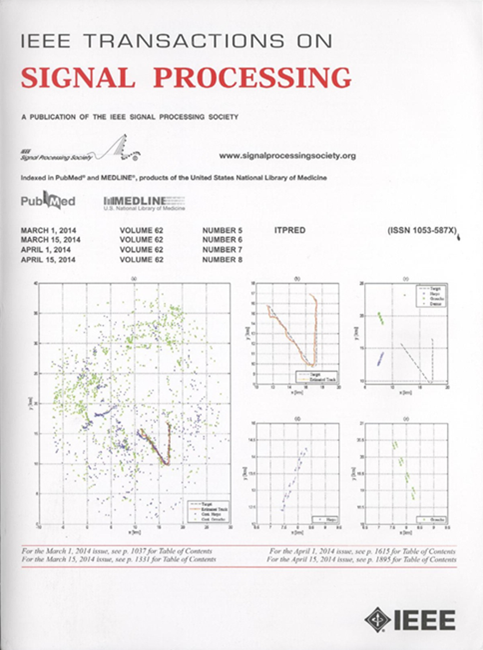分段常数纳米孔信号去噪
IF 4.6
2区 工程技术
Q1 ENGINEERING, ELECTRICAL & ELECTRONIC
引用次数: 0
摘要
纳米孔测序信号可以被描述为间接的噪声观测,它反映了纳米孔通道的瞬时电导,因为分析物DNA分子实时通过孔易位,在任何时刻都有$\delta$-mers ($\delta$-mers)阻塞孔。因此,沿着ssDNA分子重叠的$\delta$-mers序列被间接观察到作为一个用于表征其DNA序列的电导水平序列(即一个特征)。在本文中,我们对从相同的高斯输出,从左到右隐马尔可夫模型(HMM)中提取的分段恒定纳米孔信号进行降噪,并恢复用于参数化HMM的未知签名。我们在签名上放置高斯先验,并使用重要性抽样来近似给定信号的签名的最小均方误差估计(MMSE)。为了避免从真实后验中采样的困难,我们构造了一个建议分布,从该分布中可以在$O(Mn^{2}k)$时间内有效地采样观察信号的联合分割,其中$ M $为信号的数量,$ n $为每个信号的平均持续时间,$ k $为签名的长度。最后,我们使用牛津纳米孔技术公司(ONT) R10.4.1纳米孔产生的模拟和实验纳米孔信号来评估算法的性能。所提出的方法可以有效地构建精确的$\delta$-mer表,用于充分表征任何纳米孔测序仪的所有$4^{\delta}$状态。本文章由计算机程序翻译,如有差异,请以英文原文为准。
Denoising Piecewise Constant Nanopore Signals
Nanopore sequencing signals can be described as indirect noisy observations that reflect the instantaneous conductance of the nanopore channel as an analyte DNA molecule translocates through the pore in real time, with $\delta$ $\delta$ $\delta$ signature) that is used to characterize its DNA sequence. In this paper, we denoise piecewise constant nanopore signals drawn from the same Gaussian-output, left-to-right hidden Markov model (HMM) and recover the unknown signature that is used to parameterize the HMM. We place a Gaussian prior on the signature and use importance sampling to approximate the minimum mean-square error estimate (MMSE) of the signature given the signals. To circumvent the difficulty of sampling from the true posterior, we construct a proposal distribution from which the joint segmentation of the observed signals can be efficiently sampled in $O(Mn^{2}k)$ $ M $ $ n $ $ k $ $\delta$ $4^{\delta}$
求助全文
通过发布文献求助,成功后即可免费获取论文全文。
去求助
来源期刊

IEEE Transactions on Signal Processing
工程技术-工程:电子与电气
CiteScore
11.20
自引率
9.30%
发文量
310
审稿时长
3.0 months
期刊介绍:
The IEEE Transactions on Signal Processing covers novel theory, algorithms, performance analyses and applications of techniques for the processing, understanding, learning, retrieval, mining, and extraction of information from signals. The term “signal” includes, among others, audio, video, speech, image, communication, geophysical, sonar, radar, medical and musical signals. Examples of topics of interest include, but are not limited to, information processing and the theory and application of filtering, coding, transmitting, estimating, detecting, analyzing, recognizing, synthesizing, recording, and reproducing signals.
 求助内容:
求助内容: 应助结果提醒方式:
应助结果提醒方式:


